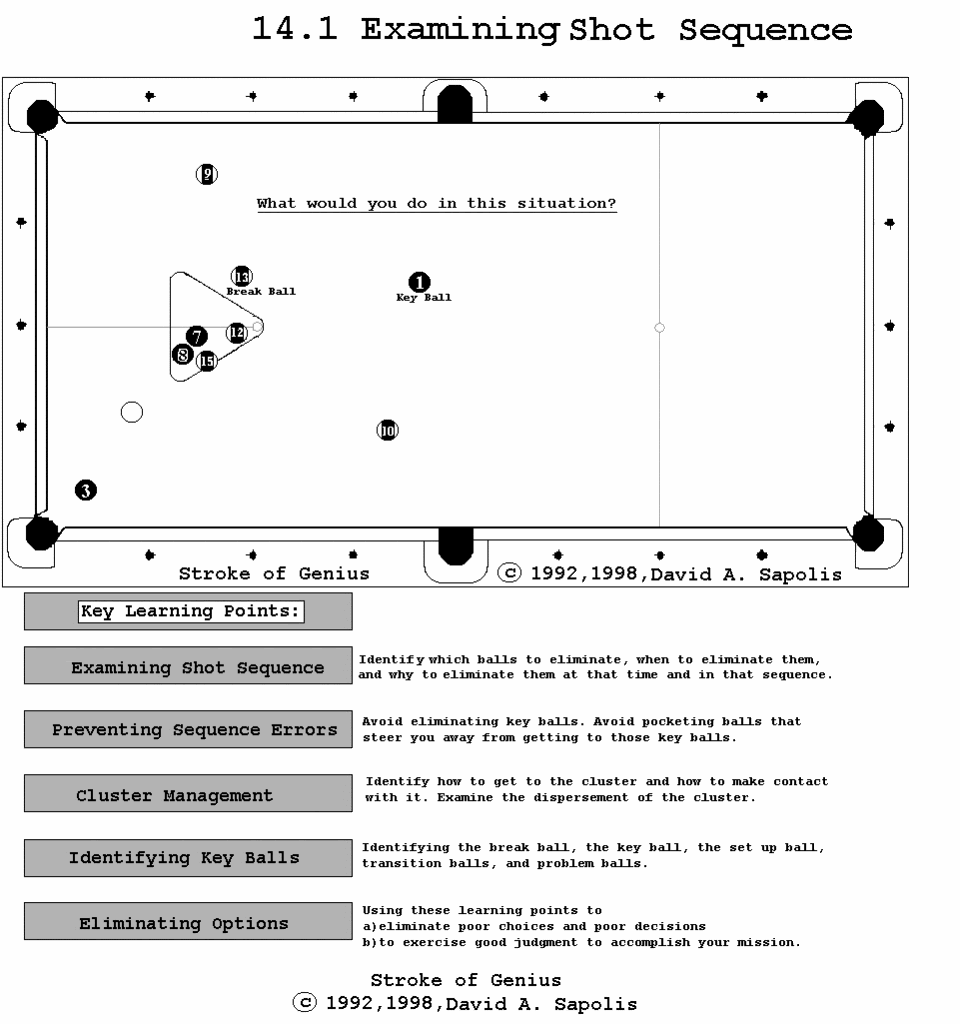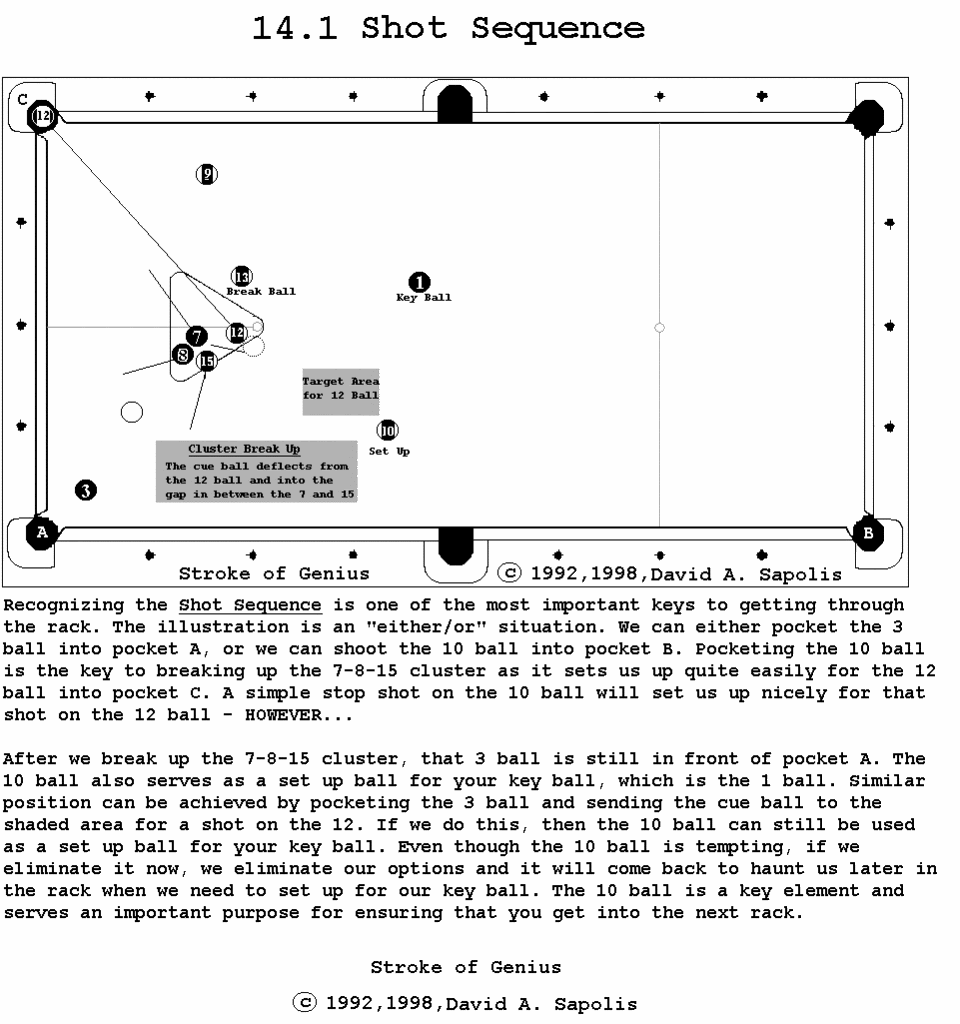

Additional Book Text -
Many players would make the mistake of leaving the 3 as an insurance ball in this situation. While you might be able to get back into position to break up the 7-8-15 cluster, there is also a chance that you might not.
I cannot overemphasize the importance of learning which balls serve a purpose and which balls do not serve a purpose. Some balls will serve a dual purpose. When you get down to having six or seven balls on the table, you had better have figured out your pattern and shot sequence to get to the break ball or you will pay a hefty price somewhere down the road.
Though pocketing the 10 ball is tempting, it really doesn't put us in an ideal position to break those balls up effectively. Using the 3 ball is the correct shot because it will put us at the perfect angle to get on the 12 ball, consequently breaking those balls out of the rack area and towards the pockets.
So how do we learn to do this at the table? By examining your options. In the above situation we have quite a few options:
Option 1 - pocket the 10 ball and get an off angle shot on the 12 to break up the cluster. The shot is risky and we may not be able to disperse the entire cluster effectively.
Option 2 - Pocket the 3 and get position above the 9 ball, setting up for the 7-8 combination. Upon making the combination, the 12 ball would be moved towards the center of the table, getting in between the 1 and the 10. If it goes up further than center table, then I have to needlessly go up table. I would rather keep everything where it is at and operate in the rack area of the table only. This option could also be used to push the 15 out for a manufactured break ball. I already have the 13 sitting pretty - so why try to do something that I don't really need to do?
Option 3 - Pocket the 3 and get position for the 12 in the corner (as illustrated).
When breaking this cluster, it is extremely important to send the cue ball directly into the gap between the 7 and the 15. This will disperse all 3 balls. Contact the balls hard enough to merely separate them. Don't blast away at it. You should get a shot on either of these 3 balls next, if not, the 10 ball serves as an insurance ball - as does the 1 ball. The 9 ball will then serve as a secondary key ball.
Choosing option #3 is the wisest choice because you are putting the odds in your favor. If by chance you have to change your sequence because the cluster break up up doesn't produce a shot, you can safely eliminate the 1 or the 10 and you will still have the 9 sitting pretty as your key ball.
When you recognize situations like this, be sure that you are playing the high percentage pattern. As I stated earlier, some balls serve a dual purpose. Many players would choose option #2 (going from the 3 ball to above the 9 ball). Eliminating the 9 ball at this stage of the run will also eliminate some of your options. High runs are either ended or extended by making the right or wrong decisions in situations such as this.